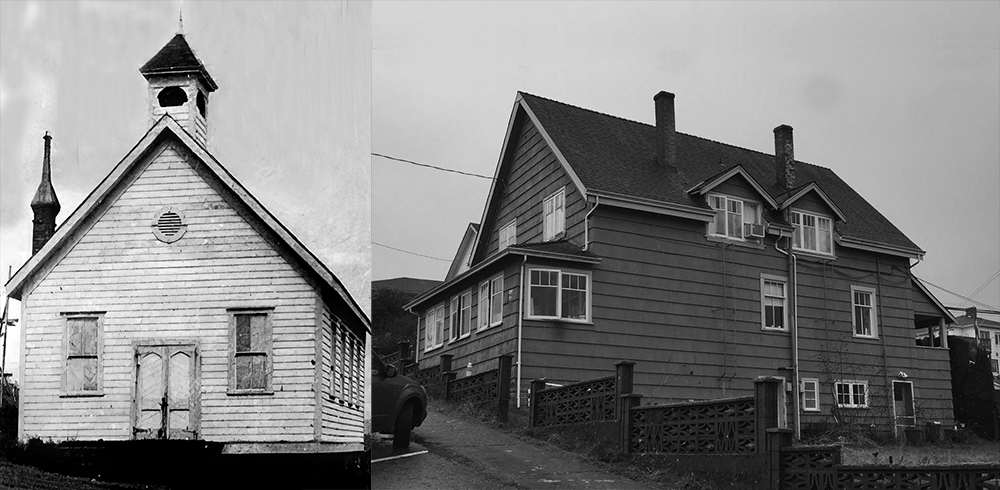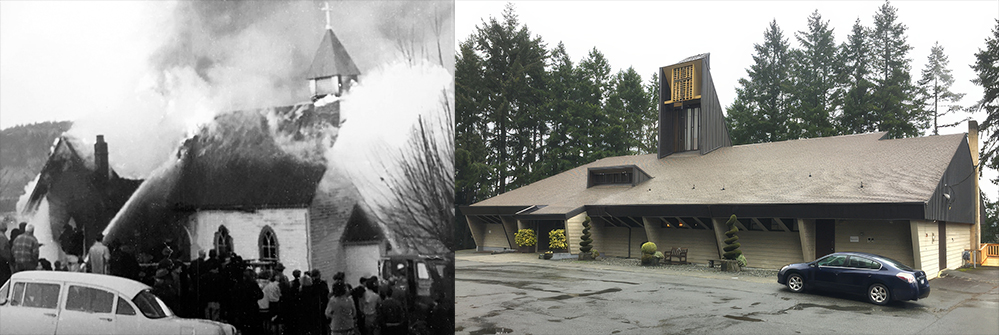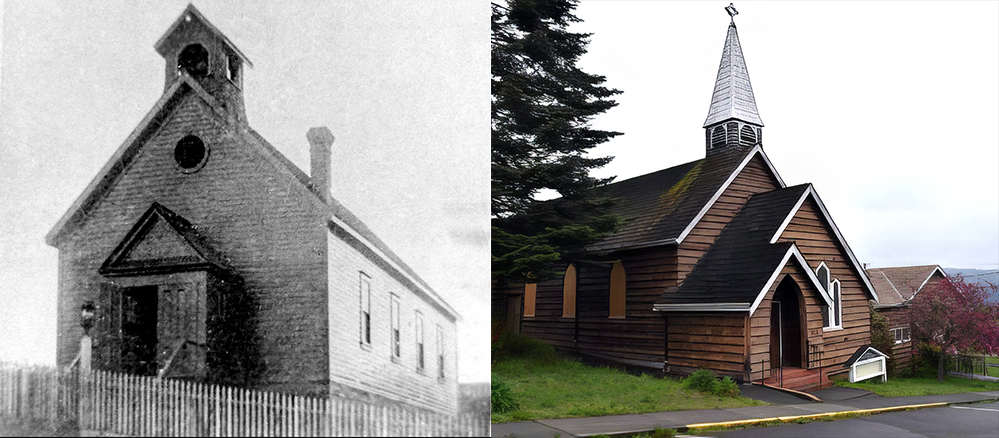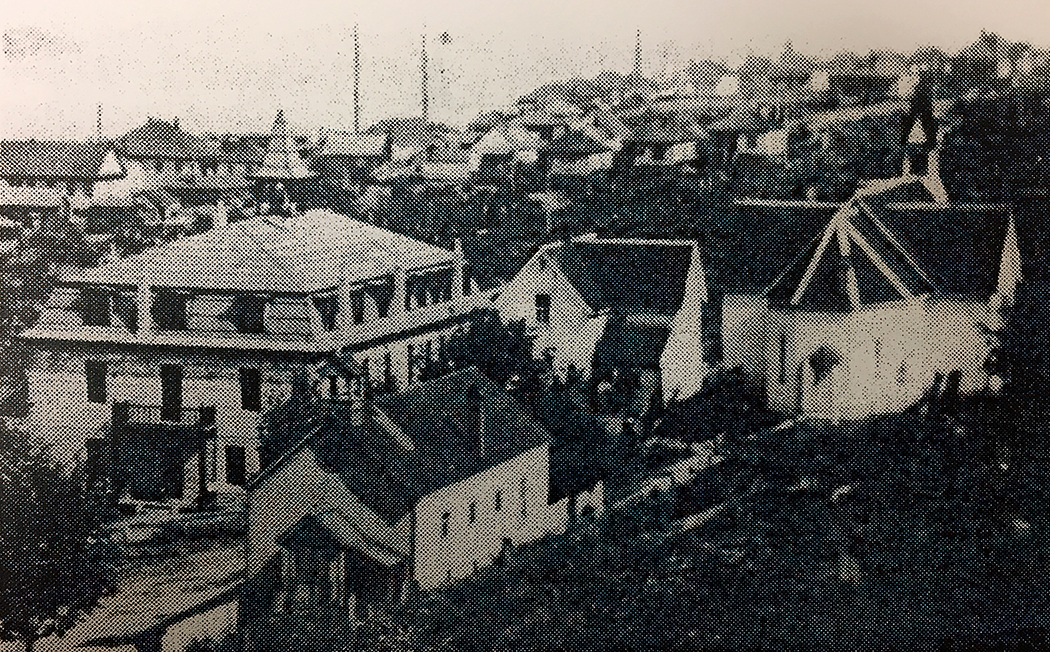Praise The Lord: Churches, Religion And Music
While surveying the layout of his new company town in the late 1890s, the coal magnate James Dunsmuir set aside four lots for Catholic, Presbyterian, Methodist and Anglican churches to be built on. Which church got which lot was decided by a draw from a hat. Dunsmuir also donated a ton of coal per month to each church for heating and designated a single block of 4 acres (1.6 Ha) of land on the outskirts of the town for a cemetery; this was divided into quadrants, one for each of the four denominations.
The first churches, all built in 1901, were simple ‘hand-me-down’ buildings – in essence, schoolhouses or community halls. They had previously stood in the town of Wellington, which was being abandoned due to the failure of the coal mines there. The buildings were disassembled and transported on railway flat cars to Ladysmith, where they were re-erected by their fledgling congregations. This allowed for a very quick turnaround. The first Presbyterian service was held beside a huge pile of lumber, which soon became, through volunteer labour, once more their church.

Left: Methodist Church, Ladysmith, circa 1902. Right: Ladysmith Methodist Church building repurposed as a private residence, March 2022
Two of the early church buildings, the Presbyterian and Methodist, survive today. The Presbyterian Church became the United Church after the 1925 union of the Methodist and Presbyterian churches.
The Methodist Church became surplus, was sold and is now a private residence.

Left: burning of the second St. Mary’s Roman Catholic Church, 1966. Right: The third and present St Mary’s Roman Catholic Church, March 2022.
The first Roman Catholic Church was replaced in 1904 by a bigger building, which burned down in 1966, to be replaced by the present St. Mary’s on a different site.
The much-renovated Anglican St. John’s Church was demolished in 2019, the congregation having merged with that of St. Philip’s in nearby Cedar and moved their worship there.

Left: St John’s Anglican Church, Ladysmith, circa 1905. Right: St John’s Anglican Church, Ladysmith, 2019.
All these early churches had choirs. They sometimes combined to stage concerts, such as that reported in 1902 wherein a Miss Bertram sang classical works by Hayden in ‘brilliant style’ at a mixed church Easter concert accompanied by members of the Anglican, Methodist and Catholic churches.
The Christian Brethren had a Chapel on Roberts Street from 1925-1986, now surviving as a private house, where musical events were held. Gatherings were lively affairs, occurring throughout the week. Ed Nicholson recalls as a child in the late 1940s/early 1950s.
My aunt’s house was next door and as a child, I remember the music that came out of there was really quite impressive. So much more joyful than the staid singing in my own church. The place rocked.
Today, churches in Ladysmith include Roman Catholic, United, Baptist and Pentecostal. A Kingdom Hall of Jehovah’s Witnesses is in nearby Cassidy. Representatives of the Spiritual Assembly of the Baha’is are also present.

Left: Ladysmith’s first purpose-built Bethel Pentecostal Tabernacle on Bayview and First Avenues, 2016. Right: Bethel Church, 1149 4th Ave, Ladysmith, 2020.
Absent is a mosque and a synagogue.
Music plays a major role in many of the church services, as evidenced by the accompanying video. Several founding members of The Rock Christian Fellowship (part of the Evangelical Free Church of Canada), which meets in the Eagles Hall, belong to the Celtic rock group known as Skellig.
Churches and Music (captions available in FR and EN). Enjoy this video with a transcript (EN).




